Here's the text.
Tsurumi and Literature
Last Updated January 15, 2024
Book cover: Publishers approved and cannot be reprinted without permission
There are many works set by Tsurumi, a writer related to Tsurumi. Here are some of the Tsurumi Library's collections.
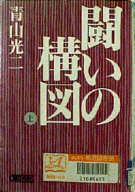
On the composition of the fight (external site) below (external site) Volume
Koji Aoyama Asahi Shimbun (Asahi Bunko) 1991, Shinchosha (Shincho Bunko), 1984, first edition 1979
A nonfiction novel dealing with the "Tsurumi no disturbance" that occurred in the Tsurumi Shiota area in the winter of 1925 (Taisho 14). Based on a 20-year survey of the construction of the Tokyo Electric Power Company Thermal Power Station, which became a turmoil from the territorial dispute between civil contractors and the cause of death.
Received the Taiko Hirabayashi Award (1980)
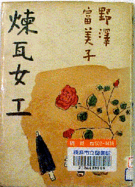
Fumiko Nozawa, Daiichi Koronsha, 1940
During the war, the Keihin Industrial Zone turned into a Japanese arsenal, and the Shiota area was filled with workers and was surrounded by a unique atmosphere. This work was born out of these things. The life of working with illness due to poverty is depicted, and the state of Shiota and Namamugi at that time.
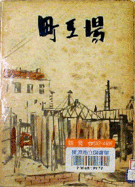
Town factory (outside site)
Kiyoshi Ozawa Winter Me Shobo (1950)
After the war, in the Yokohama and Kawasaki districts, literary activities through workplace circles were popular among factory workers. The author was one of them, and was recognized by this work. In addition to the title, this collection contains "Saka", "Respiratory Disease", "Municipal Cloth", and "Yuko Tsuji".
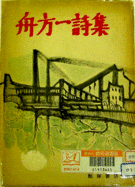
A collection of poems (outside site)
Funakata Ichiizuka Shoten, 1958
Before and after the war, he was active as a worker poet and left many poems. Here, in addition to the virgin poem "Morning of Unemployment" and "Keihin Tsurumi Shiota Scenery". (With a chronology)
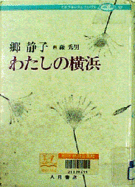
My Yokohama (outside site)
Shizuko Go Otsuki Bookstore 1982
The author is a graduate of Tsurumi Senior High School. In 1973 (Showa 48), the Akutagawa Prize-winning "Rekueimu (outside site)" draws based on his own experiences, such as the state of his alma mater during the war, labor mobilization, and air raid. This "My Yokohama" is a reportage of the author's first experience, which contains visits to his alma mater for a long time and interviews on the Tsurumi Line car.
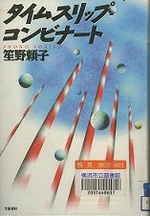
Time slip complex (outside site)
Yoriko Shono Bungei Shunju 1994
(The paperback version (outside site) was 1998.)
A woman who seems to be engaged in the writing business is told by a person who seems to be a super jitter or a tuna, saying, "Would you like to go to Kaishibaura?" The coastal area along the Tsurumi Line, which is a factory area, provided the author with a space that is unpredictable from this world. The 111st Akutagawa Prize in 1994.
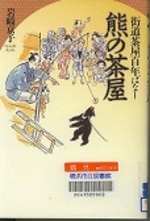
Kuma no Chaya (outside site)
Kyoko Iwasaki Ishifusha 2005
This novel is set in Tsurumi, and Kyoko Iwasaki's work cannot be removed. He carefully reads the historical document "Sekiguchi Diary", which records the life of the Edo period in detail, and depicts the lives of Ichii people that emerge from it. Reprinted by adding a short story to "Tokaido Tsurumi Village (outside site)" published by Kaiseisha in 1977.
At first it was published as a children's book, and the appearance of poor but hard-working children are drawn lively.
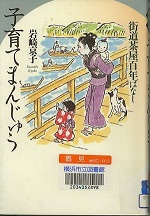
Child care manju (outside site)
Kyoko Iwasaki Ishifusha 2005
This is also a reprint of "Tsurumi Twelve Views (outside site)" published by Kaiseisha in 1979.
A book that makes you want to go around the stage with a book in one hand, such as a market village and Ikumugi village appear, and you want to go around the stage with a book in hand.
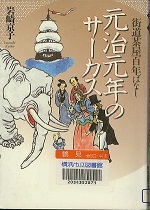
"Circus in 1864" (outside site)
Kyoko Iwasaki Ishifusha 2005
The life of the people of Tsurumi seen by Okei, the signboard daughter of Ichizen Meshiya in Tsurumi Kami-cho. It depicts the transition from the Edo period to the Meiji era, such as "Susan with Black Eyes" based on the raw wheat case, and the first railway, "Steam Car There is a steam car there."
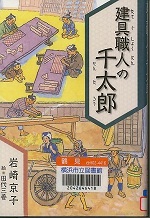
"Chitaro Sentaro of fittings craftsman" (outside site)
Kyoko Iwasaki Kumon Publishing 2009
The story of Sentaro Sentaro, who was sent to the fittings shop in Tsurumi Village, which appears in "Kuma no Chaya".
It was also an assignment book for the upper grades of the Youth Reading Impression Contest in 2010.
For inquiries to this page
Board of Education Secretariat Tsurumi Library
Phone: 045-502-4416
Phone: 045-502-4416
Fax: 045-504-6635
Email address: ky-libkocho02@city.yokohama.jp
Page ID: 153-519-426







